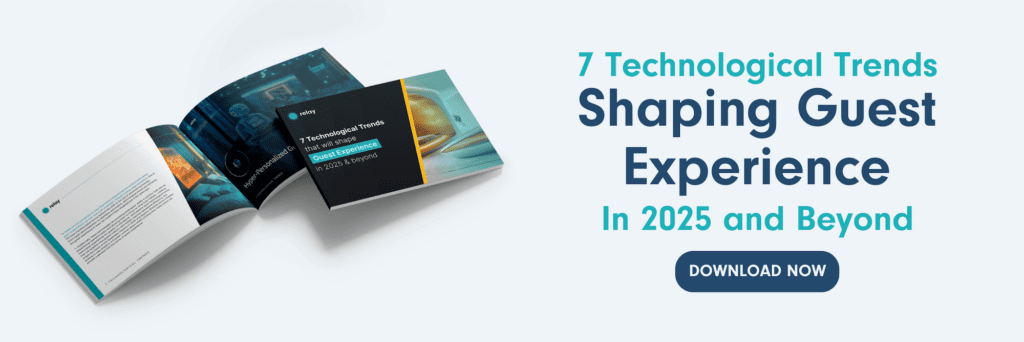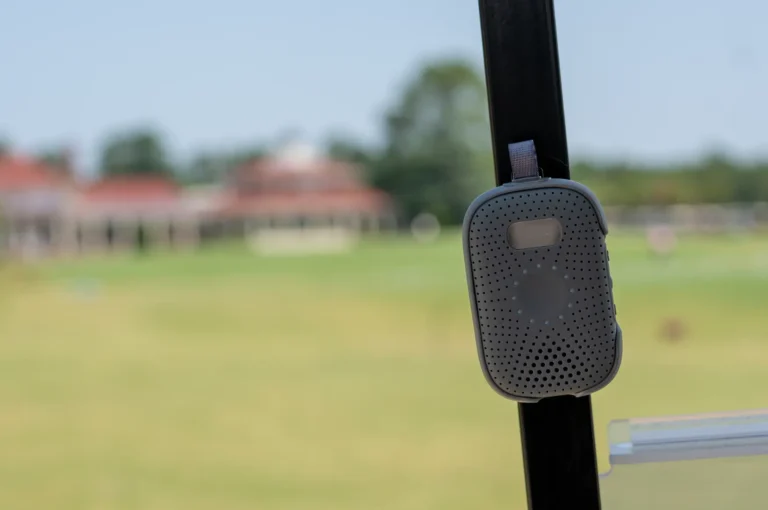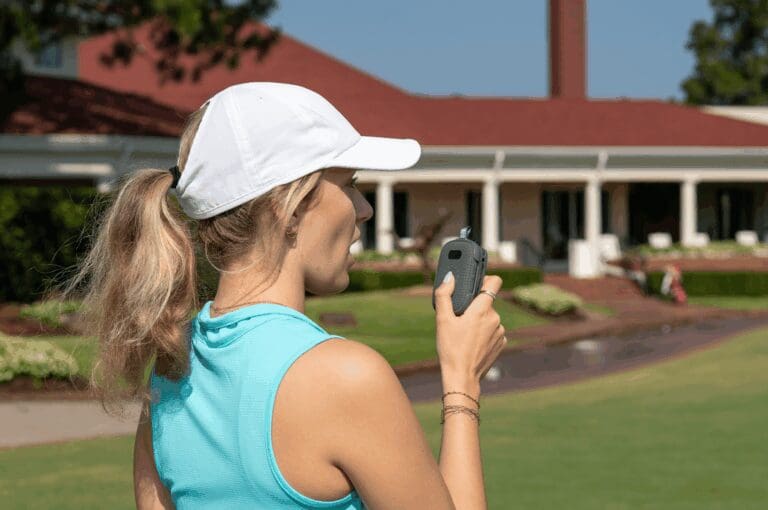Introducing new technology to staff in the hospitality industry can not only streamline operations, but also transform guest experiences and significantly boost efficiency.
Innovative solutions have been transforming hotels and restaurants’ operations for years, from digital check-ins to smart communication technology and AI-powered concierge services. However, even the most advanced tools can lead to frustration, decreased productivity, and underutilization without proper training.
Without proper training, employees may not feel confident and empowered, especially as the tech landscape changes. The digital skill gap will continue to become an issue if hospitality businesses do not take measures to help employees cultivate technological skills. According to a 2022 report from the Hospitality Technology Association, 70% of hospitality businesses struggle with employee adoption of new technology. This is a risk that can be mitigated with effective training.

Employees may resist change without clear guidance, leading to service inconsistencies and missed opportunities for improvement and efficiency. This blog will help hospitality managers develop and implement effective training strategies, ensuring a smooth transition and maximizing the full potential of new technology.
Best Practices for Training Hospitality Staff on New Technology
1. Set Clear Training Objectives
Clearly define what employees should learn and how the new technology benefits them. Setting measurable goals, for example, reducing check-in times by 30% with a new property management system, helps track progress and keeps training focused.
It also highlights a clear outcome of the training from the start, allowing employees to understand the purpose of the training from the get-go. This way, you start out by giving employees a clear understanding of why the training matters and how it will make their jobs easier.
2. Tailor Training to Different Roles
Not all staff members need the same level of training. A front desk agent must master a property management system (PMS) for check-ins and guest interactions, while housekeeping staff may only need to learn how to update room statuses.
Role-specific training prevents information overload and ensures employees focus on what’s relevant to their day-to-day tasks.
3. Make Training Hands-On and Immersive
Hospitality thrives on real-time interactions, so training in new communication technology should be as engaging and practical as possible. Employees will probably learn best by using the tools in real-world scenarios rather than sitting through passive demonstrations.
For example, you can create hands-on training by:
- Simulating daily operations by having staff practice sending and receiving messages, making group calls, and using real-time emergency alerts.
- Using the new communication system, role-play common challenges, such as handling guest requests, coordinating between departments, or escalating urgent issues to managers.
- Testing connectivity across different areas from the front desk to housekeeping, maintenance, and security ensures staff are comfortable using the technology in their work environment.
Encourage team-based practice where employees can troubleshoot, share best practices, and build confidence with the new system. Making training interactive ensures that when real situations arise, staff can communicate quickly and effectively, leading to smoother operations and better guest experiences.
4. Use Microlearning and Mobile Training
Short, digestible training sessions may work better than long lectures, especially in a fast-paced environment like hospitality. Microlearning, such as a 2-minute video on using a new communication device, a quick quiz on emergency protocols, or a brief interactive tutorial on setting up group channels, fits seamlessly into employees’ busy schedules and improves retention.
Some methods for microlearning and mobile training could include:
- Break training into bite-sized modules focusing on one key feature at a time, like sending voice messages, using hands-free communication, or responding to priority alerts.
- Use mobile-friendly training materials, such as short instructional clips, interactive guides, or quick-reference PDFs that employees can access on the go without stepping away from their tasks.
- Incorporate gamification by adding challenges or mini-tests that reinforce key functions in an engaging way.
5. Assign Tech Ambassadors
Introducing new communication technology is smoother when employees have peer support. Identify tech-savvy team members who can act as go-to resources for their colleagues, helping them feel more confident and supported during the transition.
Select ambassadors from different departments (e.g., front desk, housekeeping, concierge) to ensure everyone can access a knowledgeable team member. Creating structured sessions, such as having them lead small-group training sessions, answer real-time questions, and share best practices for using the technology efficiently. Where possible, encourage ambassadors to collect feedback from colleagues and relay insights to management, helping refine training based on real-world challenges.
6. Provide Ongoing Support & Refresher Training
Training shouldn’t end after the initial rollout. To maintain proficiency and reinforce key skills, consider offering refresher sessions before peak seasons to help staff feel confident before the rush starts. This ongoing support is a safety net that ensures staff are always prepared.
Creating resources, such as a digital knowledge base with FAQs and video tutorials, also helps reinforce training. Providing on-demand support, such as a help desk or in-app guidance, can help with initial learning gaps and refreshers as needed. For example, if your hotel introduces new communication technology, ensure a quick reference guide at the front desk for troubleshooting. Continuous learning keeps staff confident and prepared across peak and off-peak seasons.

7. Get Employee Buy-In by Explaining the ‘Why’
Employees are more likely to embrace new communication technology when they see how it directly benefits them. Without a clear understanding of “what’s in it for me?” staff may resist change or view the new system as an added burden rather than a helpful tool.
It’s crucial to highlight time savings and show how instant communication reduces back-and-forth trips between departments, making tasks more efficient. Emphasizing stress reduction is also essential, including explaining how clear, real-time messaging minimizes miscommunication helping staff avoid unnecessary frustration and delays.
This can be connected to service quality by demonstrating how faster response times improve guest experiences, leading to better reviews and increased job satisfaction. When employees understand that new communication tools make their jobs easier, not harder, they’ll be more motivated to adopt them.
8. Measure Training Effectiveness & Gather Feedback
Training doesn’t stop once employees start using the new communication technology. It’s crucial to track effectiveness and make adjustments as needed. A well-trained team should experience fewer miscommunications, faster response times, and smoother daily operations by introducing new technology
Some ways to gather feedback include:
- Monitoring key metrics: Track staff response times, error rates, and guest feedback related to service efficiency.
- Gathering employee input: Conduct quick surveys or team check-ins to identify pain points and areas needing further training.
- Observing real-world use: Watch how employees interact with the technology during their shifts. Are they using it confidently, or are they avoiding it?
- Adjusting training accordingly: If staff struggle with certain features, offer refresher sessions or create bite-sized training materials for reinforcement.
Ready to Upgrade Your Hospitality Tech?
Even the best training program can’t succeed if the technology itself isn’t user-friendly or aligned with your team’s needs. Complicated systems with steep learning curves can slow down service, frustrate employees, and ultimately impact the guest experience.
By choosing the right tools and investing in effective training, hospitality businesses can unlock key benefits:
- Faster service and improved operational efficiency
- Increased staff confidence and job satisfaction
- Remove staff and guest language barriers
- Better guest experiences and higher customer retention
- Reduced errors and smoother daily workflows
- A more adaptable, future-proof workforce
Relay is a simple, durable, and intuitive communication solution designed to keep hospitality teams connected in real-time. With hands-free functionality, nationwide coverage, seamless team coordination, and even real-time language translation, Relay helps eliminate communication barriers so staff can focus on what matters most—delivering exceptional service.
Don’t let outdated technology slow your team down. Get pricing today.







